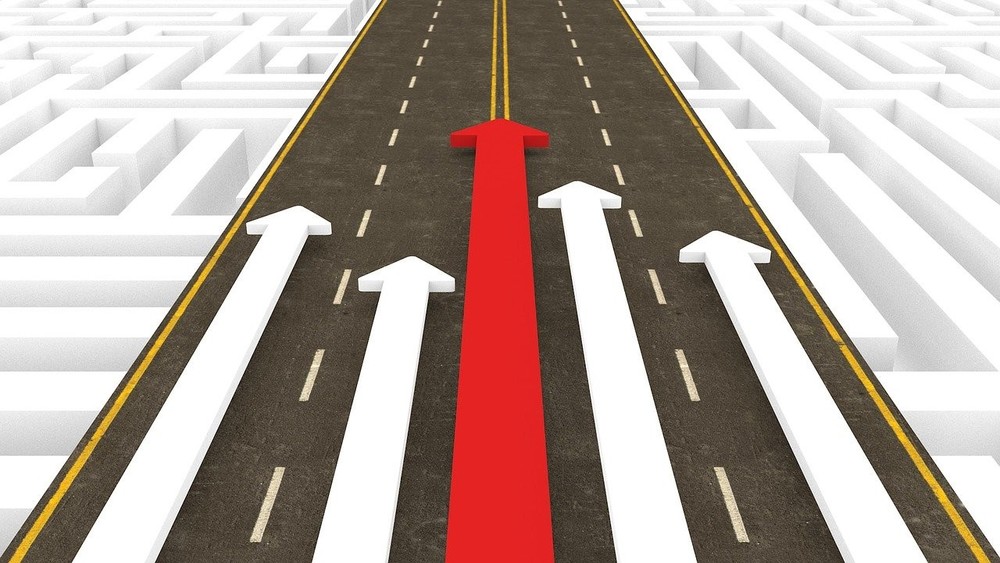This article is part of a blog series on Construction 4.0 technologies, exploring how they are changing the way we do business in the construction industry.
Two major trends are talked about everywhere in the construction industry:
- Construction 4.0, also called digitalization
- Sustainability
They are normally discussed separately but are interdependent, so we explain in this article how they interlink.
Construction 4.0 technologies raise the economic and environmental sustainability of the Architecture, Engineering, Construction, and Operation (AECO) industry. A new study shows that the worldwide share of energy used in buildings represents 17.5% of the total energy consumption:
- residential buildings 10.9%
- commercial buildings 6.6%
The sustainability of the AECO industry is impacted by the construction 4.0 technologies such as:
- the Internet of Things (IoT)
- blockchain, which takes control of supply chains and contracts in ways that weren’t possible just ten years ago
- drones
- Artificial Intelligence (AI)
- self-healing materials, which integrate themselves into the material eradicating temporary scrape requirements and human inspection
Scientific researchers at the University of Exeter in the United Kingdom discovered that high carbon emissions, low productivity, and increased costs could be improved if the industry was largely adopting construction 4.0 technologies.
The framework they developed to increase the deployment of construction 4.0 technology addressed all negative impacts on sustainability.
The framework was tested in the construction industry in the United Arab Emirates where the construction industry is growing by 9% per year and is generating 75% of all solid waste in the country.
The researchers found that the use of construction 4.0 technologies will increase by around 20% in all categories in the next five years. They categorized the technologies in use as follows:
- digitalization
- automation
- advanced manufacturing
- integration and collaboration
- intelligent environment.
The following technologies will help the transformation and sustainability of construction over the next five years.
The Internet of Things (IoT)
This technology will:
- keep track of materials and equipment
- continuously monitor dust, hazardous fumes, noise, vibrations
- motion detection
The IoT was found to have a mainly positive impact on the environment thanks to:
- real-time and accurate data collected
- analytics on material usage and waste
Automation and advanced manufacturing technologies
They are the backbone of the industry. They help to reduce waste. They include:
Integration and collaboration technologies
3D Building Information Modelling (BIM) and intelligent environment technologies such as machine learning, artificial intelligence, and smart materials, reduce paperwork.
Immersive Technologies (VR and AR) used in design and prefabrication help to:
- minimize carbon emissions
- reduce waste.
Energy-saving tools
Making analysis of water, lighting, environmentally friendly materials, and scheduling human resources, using AI is proven to be useful to:
- reduce the impact on the environment
- lower the cost of construction projects.
Optimizing the operations of a building will help you to:
- reduce waste
- improve inspection and supervision
- automate routine administrative tasks
- improve the safety of the building and its occupants
- enhance the environment.
The downside to improving sustainability using Construction 4.0 technologies will be the amount of computational power and the electronic waste generated, to operate these technologies.
Let's talk about sustainability
A report, from The Buildings-GSR, provides:
- an annual view of the sustainability progress of the buildings and construction sector worldwide
- evidence to persuade policymakers and the overall buildings and construction community to act.
The findings of the 2022 report are not very encouraging:
- buildings represented 37% of global CO2 emissions in 2021
- CO2 emission increased by 5% from 2020
- energy consumption from buildings increased by 4% from 2020
- investment since 2015 increased by 16%
- investment in decarbonization from various governments and other stakeholders will decrease due to high inflation
- construction activities after the 2020 lockdown regained in 2021 the pre-pandemic level
- the rate of construction is increasing.
The goals, to prevent the temperature to increase more than 1.5%, from U.N. leaders are to:
- halve emissions from the construction environment by 2030
- operate all new buildings with net-zero in carbon by 2050
- avoid any further disruption from climate change.
The report says the sector will not reach the 2050 decarbonization goals, however The More Science Based Targets initiative engaged 3,000 companies across the world to commit to reducing CO2.
Futuristic building and sustainability

All is not as gloomy as the report shows. We see a lot of sustainability activities in the construction industry:
- making material steps to reduce its environmental impact
- customers are becoming more sustainability-conscious
- the pressure is put on developers to lower the carbon footprint of new construction
- sustainability is part of all new projects and construction processes.
Designers aim to:
- reduce material waste from demolitions
- switch to eco-friendly building materials
- choose locally sourced building products.
Clients are pushing construction companies to provide sustainable, environmentally friendly practices
How is construction becoming more sustainable?

Let's take a look at how to cut emissions in construction and what drove sustainability in the last ten years.
Very often when you mention sustainability in the AECO industry people are exasperated as it is considered a banality in the sector. Is it ecological? Is it to minimize climate change?
What is the definition of sustainable constructions?
The UN World Commission on Environment and Development's definition of sustainability is:
Sustainability means meeting our own needs without compromising the ability of future generations to meet their own needs.
In sustainable construction you are:
- using recyclable and renewable materials in building projects
- minimizing energy consumption and waste production
- reducing the impact on our environment.
Sustainability covers the whole life cycle of a project
During the design phase, you should make sure that your construction will have a minimal impact on the environment over the project's lifespan. The design should include objects and materials that impact the structure's environment like:
- energy-efficient roof access
- solar panels
- appropriate insulation to building materials.
So, what can you do to build sustainable constructions?
- use only natural resources that the planet can provide
- make sure not to pollute the air and water
- do not heat up the planet
- create processes and solutions that can last forever to keep our planet safe, beautiful, and enjoyable to live on.
Digitalization drives sustainability

Eliminating waste
In 2018, England produced a report on waste which shows that 61.4 million tonnes of non-hazardous construction and demolition waste was generated, of which 57.5 million tonnes was recovered. This represents a recovery rate of 93.8%, exceeding the target of 70%!
Below are two examples of how to recover demolition waste.
3D printing used in construction can help you to:
- save time by 70%
- reduce materials used by 60% with no waste produced
- reduce the amount of water used in the building process.
Construction management software helps you to:
- understand and control your building process
- optimize the number of materials you buy
- make sure that you use, relocate or reuse the material excess
- keep track of your orders.
Streamline processes
Digital tools can increase your efficiency by:
- improving the quality of your building
- delivering projects on time
- making your projects environmentally friendly.
BIM will help you achieve sustainability goals by creating a virtual 3D model with data that allows you to:
- complete energy-usage calculations
- find building materials to achieve your sustainability targets
- develop efficient logistic plans
- optimize water and lighting consumption
- manage building life cycles to reduce carbon footprints
- reduce material requirements
- eliminate waste.
If you collaborate with the contractors and facility managers at the design stage, before construction starts, you can reduce the risk of costly reworks, waste of energy, water, and materials.
Smart buildings
Buildings are referred to as “smart” when using technology to:
- help manage resources
- create a comfortable and safe space.
Smart buildings are constructed with various tools, like:
- IoT sensors
- building management systems
- artificial intelligence.
For instance by using the data collected from residents of smart buildings you can:
- achieve lower energy consumption
- optimize lighting and HVAC systems
- avoid wasting water by monitoring the piping system with sensors
- pair decentralized devices and energy sources to reduce energy consumption
- collect and analyze energy data to improve energy distribution and performance.
Eco-friendly administrative processes
Cloud-based management software will help:
- streamline the construction process
- save resources
- reduce carbon emissions
- facilitate the electronic management of your documents, contracts, and invoices making the process paperless
- save energy from printing
- reduce emissions by not sending documents via traditional mail
Flexibility
Sustainability is more than the climate and the environment. It is anticipating whatever the future can bring.
Remote working, following the pandemic, changed the way we operate.
By storing all information and data in the cloud you can quickly find and access the right information from anywhere in the world and maintain good communication.
BIM, immersive technologies, and electronic communication tools facilitate remote collaboration, avoiding inevitable emissions if you had to travel to site.
In Conclusion

Management consulting firm McKinsey has announced the launch of the Net Zero Built Environment Council. The council will:
- have members from across the construction industry
- examine how to eliminate greenhouse gas emissions from the built environment
- support stakeholders in the creation and commercialization of "green" innovations, including materials and technologies
- promote methods of building that will aid the decarbonization of the industry.
- help stakeholders to enter ‘green’ markets, estimated to be worth €2 trillion.
McKinsey's research found that:
- half of all emissions across the built environment could be eliminated
- you can reduce by 20% the use of materials (ie cement and steel)
- you can decarbonize the industry completely.
Brodie Boland, a partner at McKinsey, said:
Reducing lifecycle emissions will require collaboration and partnerships across industries to cost-efficiently build and scale new innovations from green cement to hydrogen boilers.
Yet the built environment is currently a fragmented landscape of separate localized markets, suppliers, and building codes as well as disjointed construction processes with unequal accountability.
With net zero requiring a threefold increase in the pace of decarbonization, the new council aims to unite all key players to accelerate decarbonization by collectively transforming the way we design, build, operate and decommission.
Connecting construction 4.0 and sustainability will force change and innovation.
Keeping pace with rapidly changing technologies makes you more agile to adapt to climate change. It builds a ring of innovation to achieve a better future.
It is time for you to embrace digital transformation and review your business model to make your business more sustainable, improve your decision-making process, and gain competitiveness.
Driving Vision's technology diagnostic looks at the best way to incorporate new technology into your workflows and how to move your organization to the use of Construction 4.0 technologies so you can open up new possibilities for your daily planning tasks.
The technology appraisal report will help you to explore what investment is required to improve your projects’ productivity and collaboration as well as the ROI you can expect.
A Driving Vision expert will conduct the interviews online and will issue a report and discuss our findings with you. Together we will decide the best way to implement the solutions at your pace and according to your budget.
It’s been quite a year, but over the Christmas holidays let’s remember the joy of times, past and present.
Have a restful Christmas and let’s look forward to a peaceful New Year. We will resume publishing blogs on January 13th.
Implementing BIM can be daunting, but Driving Vision is here to help you at the pace you are comfortable with. Get started by getting in touch now






